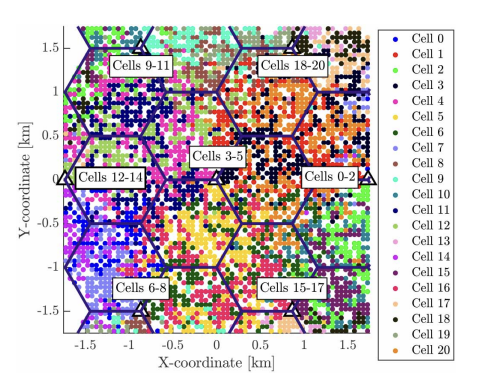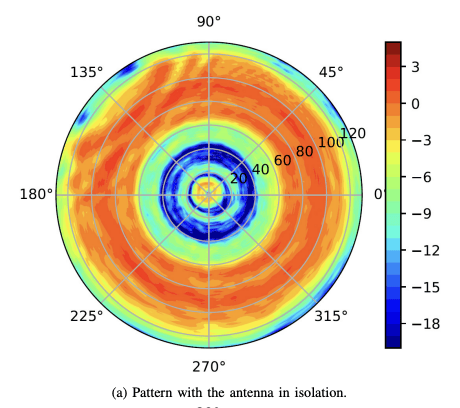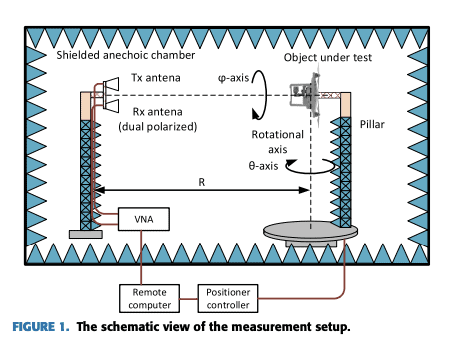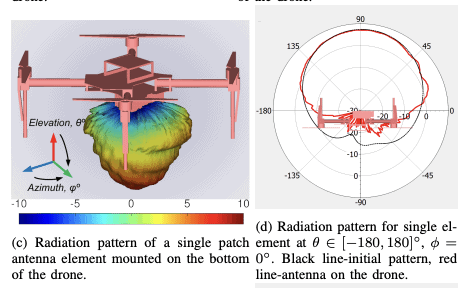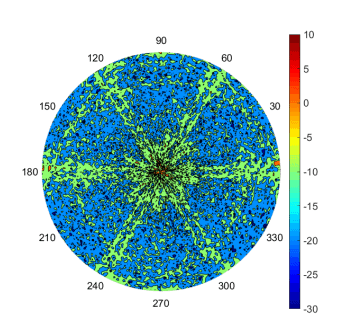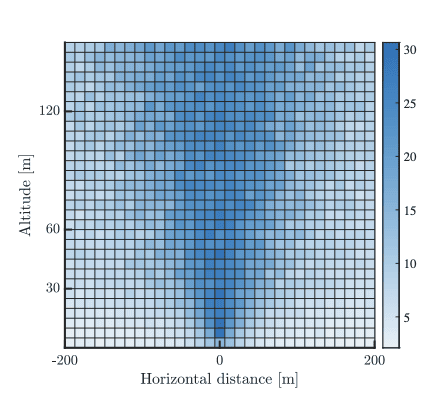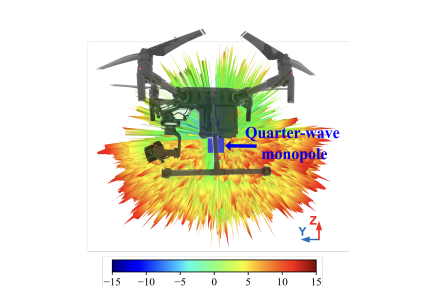Aerial Sensing and Channel Modeling

NYU Wireless P.I.s
Collaborators
- Vasilii Semkin
Research Overview
Unmanned Aerial Vehicles (UAVs) are becoming indispensable in many emerging industries. The explosive proliferation of this technology has resulted in the creation of a plethora of new applications that pose stringent wireless communications performance requirements. Exchanging large volumes of sensory data in the minimum amount of time is critical in most operations such as surveillance, disaster response monitoring, and search-and-rescue. For this reason, the massive amount of available spectrum in the millimeter-wave (mmWave) bands represents a key enabling technology for future aerial wireless communications. In this realm, several fundamental questions remain unanswered. In particular, characterizing the mmWave signal propagation in mid-air as well as designing the channel tracking mechanisms to maximize aerial connectivity remain important open questions.
Channel modeling for UAVs
Channel models represent a key building block to design wireless systems. However, global cellular standardization bodies rely on mmWave channel models that are based on terrestrial measurements. The goal of this project is to advance the understanding of UAV mmWave channel propagation and, accordingly, design novel directional channel tracking algorithms to improve UAV mmWave connectivity.
a) Generative Neural Network Channel Modeling for Millimeter-Wave UAV Communication
This work presents a general modeling methodology based on data-training a generative neural network. The proposed generative model has a two-stage structure that first predicts the link state (line-of-sight, non-line-of-sight, or outage), and subsequently feeds this state into a conditional variational auto-encoder (VAE) that generates the path losses, delays, and angles of arrival and departure for all the propagation paths. The methodology is demonstrated for 28GHz air-to-ground channels between UAVs and a cellular system in representative urban environments, with training datasets produced through ray tracing.

Aerial Channel Sounding
The NYU team, in collaboration with VTT Technical Research of Finland, is working on: (1) Developing a custom UAV-based mmWave channel sounder with beam steerable phased array antenna to enable channel measurements that are optimized for UAVs; (2) Conduct extensive air-to-ground (A2G) and air-to-air (A2A) mmWave measurements using the channel sounder developed in (1); (3) Train generative neural networks to derive realistic aerial mmWave channel models and compare them with existing 3GPP models; (4) Develop AI-based aerial channel-tracking algorithms to improve UAV mmWave connectivity.
Below, we report the block diagram of the UAV node, alongside the CAD model of the Rx node, which is located on the UAV. We also show a picture taken from the test site during our measurement campaign conducted in Nivelles, Belgium.



The system comprises the following hardware
- UAV: DJI M600 Pro, Hexarotor PPL612 Plus EVO XL
- Baseband processor: Xilinx RFSoC 2×2
- mmWave front-end: SiversIMA 60 GHz arrays
follow this research
*stay current with research in this area by completing this form

 2025 Brooklyn 6G Summit — November 5-7
2025 Brooklyn 6G Summit — November 5-7 Sundeep Rangan & Team Receive NTIA Award
Sundeep Rangan & Team Receive NTIA Award 2025 Open House
2025 Open House









